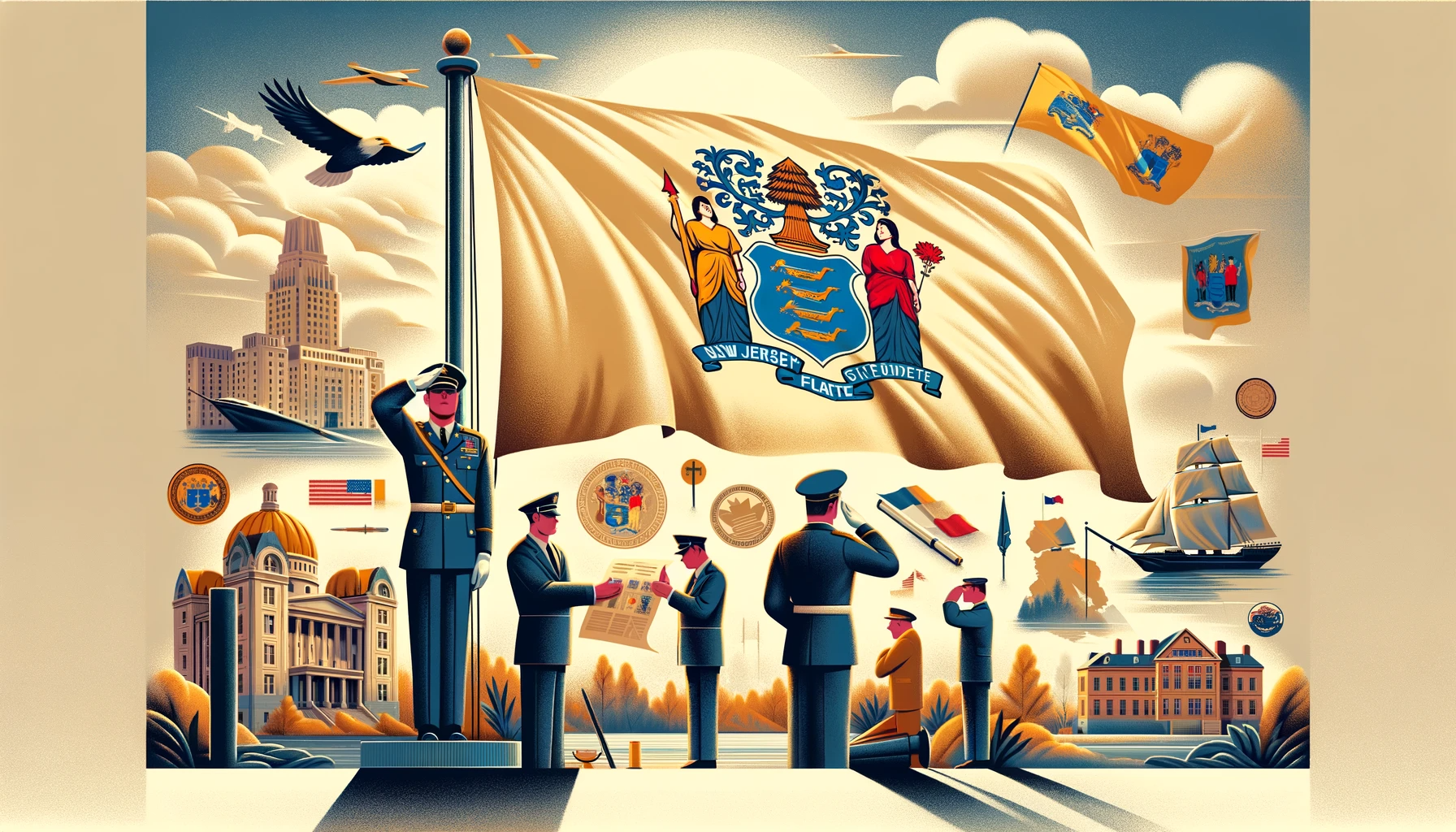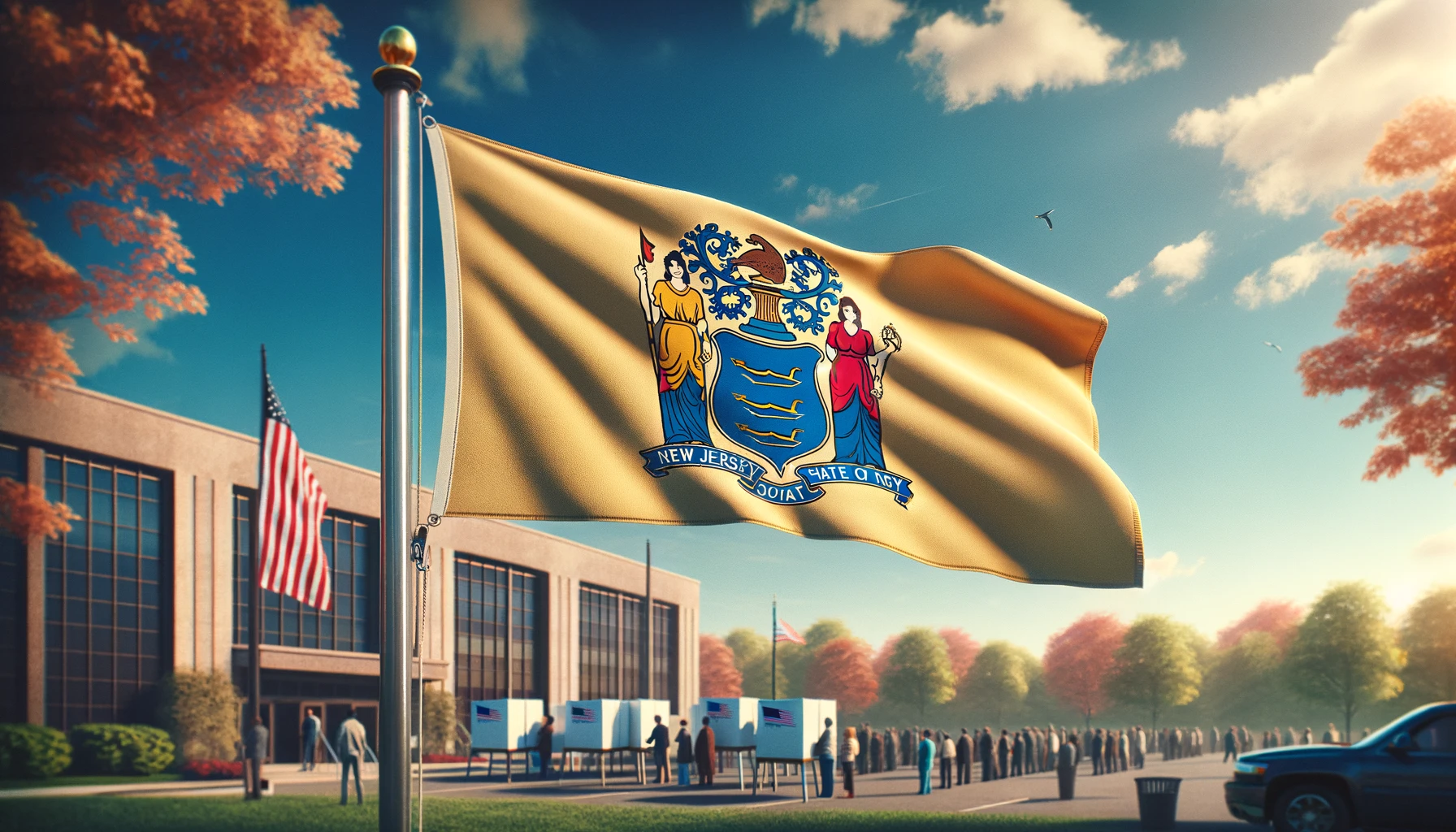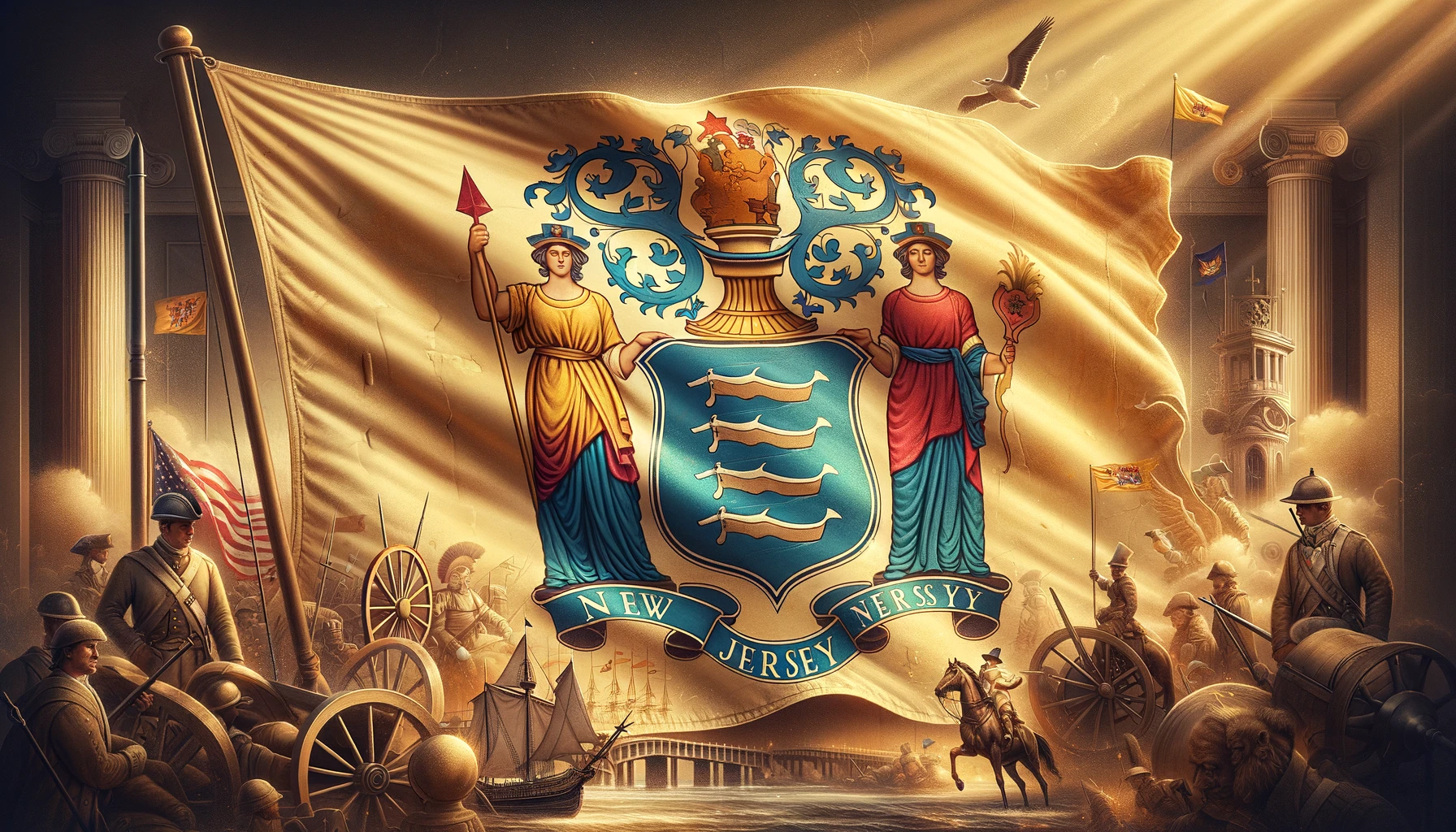Flags are potent symbols, representing ideals, history, and pride. In New Jersey, a state with a rich historical tapestry, understanding and respecting flag etiquette is not just a matter of protocol but a sign of respect to the state’s heritage. This guide delves deep into the flag etiquettes of New Jersey, offering a comprehensive understanding for residents, businesses, and government entities.
The Historical Significance of New Jersey’s Flag
Unraveling the Past
The New Jersey state flag, adopted in 1896, is steeped in history. Its design elements, including the buff color and coat of arms, trace back to the Revolutionary War. These colors were selected by General George Washington and have since become a symbol of the state’s enduring legacy.
The buff color was the facing color of the uniforms worn by the New Jersey troops during the war. The coat of arms, which dates back to 1777, features a shield with three plows, representing the state’s agricultural heritage. Above the shield is a horse’s head, symbolizing speed and strength. Below the shield is a scroll with the state motto, “Liberty and Prosperity”. The helmet above the horse’s head signifies the state’s sovereignty.
Key Guidelines for Handling the New Jersey Flag |
|
|---|---|
Display and Care |
|
Half-Staff Observances |
|
Unique State Traditions |
|
Guidelines for Businesses and Schools |
|

A Symbol of State Pride
A Symbol of State Pride
The flag’s imagery – the horse’s head, the helmet, and the plows in the shield – symbolize strength, sovereignty, and agriculture’s importance in New Jersey’s history. This symbolism is key to understanding the flag’s cultural and historical significance.
The horse is the state animal of New Jersey, and has played a vital role in the state’s economy and transportation. The helmet reflects the state’s independence and dignity, as well as its status as one of the original 13 colonies. The plows honor the state’s farming roots and its contribution to the nation’s food supply.
The flag also represents the state’s pride and patriotism, as it has flown over many important events and landmarks in the state’s history. For example, the flag was raised at the Battle of Monmouth in 1778, where the New Jersey militia fought bravely against the British forces. The flag was also flown at the Princeton University campus, where the Continental Congress met in 1783. The flag was also present at the inauguration of Woodrow Wilson, the 28th president of the United States and a former governor of New Jersey, in 1913.
Comprehensive Guide to Flag Etiquette in New Jersey
Proper Display and Care
In line with national standards, New Jersey’s flag etiquette emphasizes respect. Key guidelines include displaying the flag from sunrise to sunset, ensuring it never touches the ground, and folding it ceremoniously.
The flag should be displayed on a staff or pole, or in a window or balcony, in a manner that does not obstruct or interfere with traffic or pedestrians. The flag should be hoisted briskly and lowered ceremoniously. The flag should not be displayed during inclement weather, unless it is an all-weather flag. The flag should not be used for advertising or decoration purposes, nor should it be draped over vehicles or objects. The flag should not be defaced, mutilated, or altered in any way.
When the flag is no longer fit for display, it should be disposed of in a dignified manner, preferably by burning. The flag should be folded in a triangular shape, with the union (the blue field with the stars) visible. The flag should be handled with care and reverence, and never thrown away or discarded.
Half-Staff Observances
The flag is flown at half-staff to honor and mourn significant figures or events. Understanding when and why this happens is crucial, as it reflects the state and nation’s current sentiments.
The flag is flown at half-staff by order of the president of the United States or the governor of New Jersey. The president may order the flag to be flown at half-staff for the death of a former or current president, vice president, chief justice, speaker of the house, or other high-ranking official. The governor may order the flag to be flown at half-staff for the death of a former or current governor, lieutenant governor, senator, representative, or other state official. The governor may also order the flag to be flown at half-staff for the death of a member of the armed forces, a law enforcement officer, a firefighter, or a public servant who died in the line of duty. The governor may also order the flag to be flown at half-staff for a state or national tragedy, such as a terrorist attack, a natural disaster, or a mass shooting.
When the flag is flown at half-staff, it should be first hoisted to the peak of the staff, then lowered to the half-staff position. The flag should be raised to the peak again before it is lowered for the day. The flag should not be flown at half-staff on any other occasion, unless authorized by the president or the governor.

New Jersey’s Unique Flag Traditions
New Jersey’s Unique Flag Traditions
State-Specific Observances
New Jersey celebrates several unique flag-related days, such as New Jersey Day and Patriot’s Day. These occasions often involve special flag ceremonies, enhancing communal bonds and state pride.
New Jersey Day is celebrated on June 24, the anniversary of the state’s ratification of the U.S. Constitution in 1788. On this day, the governor issues a proclamation, and the state flag is flown at all public buildings and grounds. The state also hosts various events and activities to commemorate the state’s history and culture.
Patriot’s Day is celebrated on September 11, the anniversary of the terrorist attacks in 2001. On this day, the governor orders the flag to be flown at half-staff from sunrise to sunset, and a moment of silence is observed at 8:46 a.m., the time when the first plane struck the World Trade Center. The state also holds memorial services and tributes to honor the victims and heroes of the attacks, many of whom were from New Jersey.
Guidelines for Businesses and Educational Institutions
Local businesses and schools play a crucial role in flag observances. This section offers tailored advice for these entities on displaying the flag, especially during state and national holidays.
Businesses that display the flag should follow the same etiquette as the general public, and ensure that the flag is properly illuminated, maintained, and respected. Businesses should also be aware of the state and national holidays that require the flag to be flown at full-staff or half-staff, and adjust accordingly. Businesses should also avoid using the flag for commercial or promotional purposes, or as a part of their logo or trademark.
Schools that display the flag should also follow the same etiquette as the general public, and ensure that the flag is handled by trained and authorized personnel. Schools should also incorporate flag education and appreciation into their curriculum, and teach students about the history and significance of the flag. Schools should also encourage students to participate in flag ceremonies and observances, and foster a sense of patriotism and civic responsibility.
Conclusion
Flag etiquette in New Jersey is a blend of national standards and local customs. This guide serves not just as a set of rules but as a window into the state’s soul. Understanding and practicing proper flag etiquette is a way to connect with and honor the Garden State’s history and values. By displaying the flag with respect and pride, we can show our gratitude and loyalty to our state and our nation.


